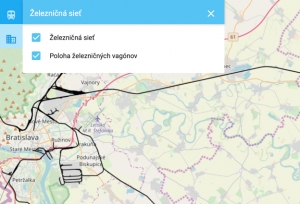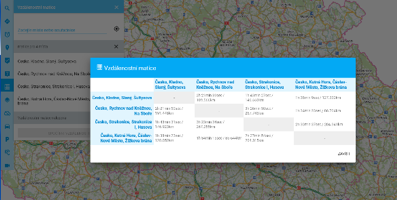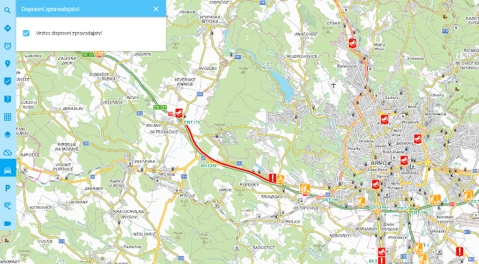Map server Open Layers (MSOL)
Map server Open Layers (MSOL) is a modular and scalable system for working with spatial data (vector, raster). This product consists of separate backend services and a front end section that is customized to meet customer requirements.
The system is based on technologies: Java 8, Microservices (Spring Boot, Spring Cloud), Apache SOLR, Geoserver, PostgreSQL / Postgis, the presentation layer is based on: Openlayers4, React, Material UI design.
Basic functionality
- Authentication and authorization (recording and measuring access for individual services or queries)
- Display vectors and rasters, 2D building visualization, integration of external WMS layers (eg cadastral boundaries)
- Fulltext search for administrative areas, cities / towns / parts of village, streets, address points, points of interest and reverse geocoding
- Calculation of service area, distance and distance matrix to POI such as. parking spaces, taking into account occupancy
- Route search for various modes of transport (pedestrian mode, bicycle, passenger car, truck, mode for people with disabilities such as wheelchair or blind). It is possible to calculate different types of routes (fastest, shortest), possibility to take into account various parameters such as eg. weight, length, width, etc. and the possibility to take into account the current traffic situation. For specific customer needs we use different types of routing, such as. Dijstra, A * algorithms, Yen, Heuristics ALT, Contraction hierarchies, etc.
- Integrating and displaying external data sources, e.g. information on occupancy of parking spaces, traffic information (accidents, restrictions, traffic status), traffic cameras, meteo data or current location of objects
- Authentication and authorization (recording and measuring access for individual services or queries)
MSOL architecture

MSOL usage
MSOL is part of several products. Some of these products are available online, others are part of a customer-specific internal solution. If you are interested in presenting all functionalities, contact us at:
- The functionality of the informative toll payment calculation (support of weight limits and multimodel, i.e. section validity) available on emyto.sk
- The National System for Traffic Information (NSDI) is a portal providing information on the current traffic situation. Routing supports taking into account motorway sections / toll sections, current traffic situation, shortest / fastest parameters, forbidden maneuvers and so on.
- CEDA Web Services (CWS), or a set of Internet-based tools for working with digital maps with supported features: search, routing, range, distance matrix, navigation for people with reduced mobility (more information and contact to the service broker is at this address)
Gallery
Display the floorplan for the bildings and the smart devices inside
- display multiple floors
- display installed devices and their status / data

Find an area
- locate and display the specific area based on given criteria

Find directions
- find a route based on start, end, via points, and other criteria
- display route itinerary

Reachable area
- display the area reachable via road network within specified time limit
- color differentiation for different time limits

Wagon and goods position monitoring
- monitoring of the wagon and goods position and condition by using IoT on the railway network

Find POIs
- find / filter Points of Interest based on description and category

Routing to the nearest POI
- find the route to the nearest POI based on route parameters

Toll calculator
- calculate the toll based on the vehicle category and route parameters

Reverse geocoding
- get address / location description based on coordinates

Distance matrix
- calculate the route based on set criteria between a set of endpoints

Air pollution data integration
- display a network of sensors of different categories
- display sensor data
- filter data based on sensor parameters and data properties

Traffic Information Integration
- road accidents
- traffic flow data, expected delays

Parking information integration
- parking search based on criteria
- information on occupancy of parking lots
- get the route to the nearest (free) parking

Integration of noise level data
- display sensor network
- display sensor data
- filter data based on sensor parameters and data properties


